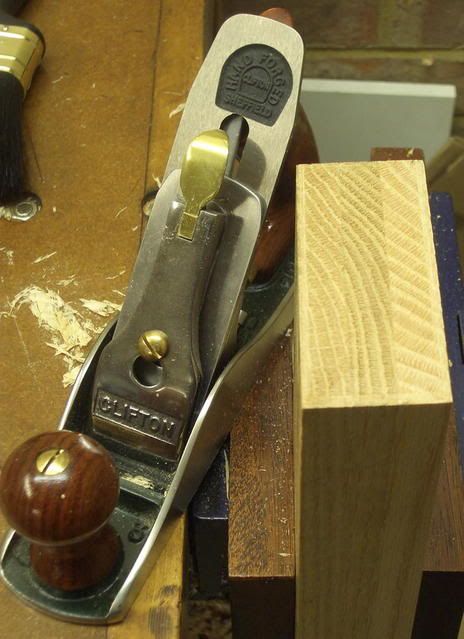I was wondering what angle most people would settle on for the final polish on the blades of their low angle block planes: this would be the second or even third bevel.
I've been experimenting with my old stanley version by grinding the stock blade at just under 20 degrees, then honing it at just over 20 and finally polishing the secondary bevel at 23 degrees. This gave me a cutting angle of just 35 degrees when the bed angle is added in but it has proved to be too brittle - chipped badly on yellow pine end grain! Won't be trying the oak with it then. :shock:
I've been experimenting with my old stanley version by grinding the stock blade at just under 20 degrees, then honing it at just over 20 and finally polishing the secondary bevel at 23 degrees. This gave me a cutting angle of just 35 degrees when the bed angle is added in but it has proved to be too brittle - chipped badly on yellow pine end grain! Won't be trying the oak with it then. :shock:





